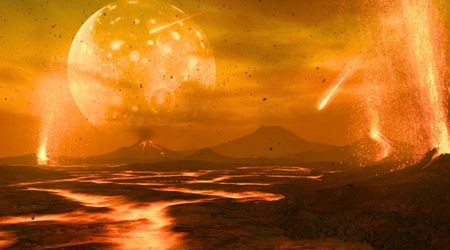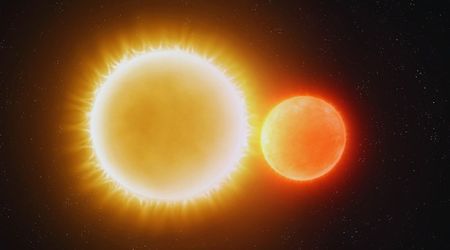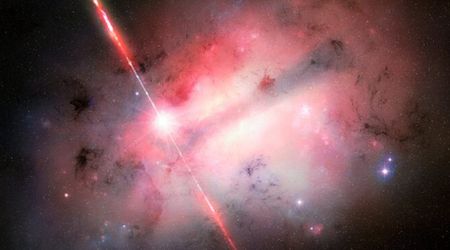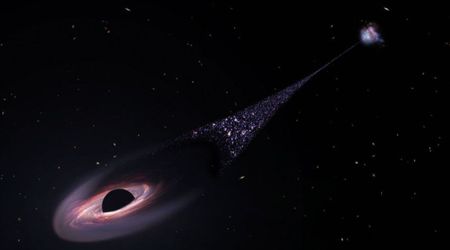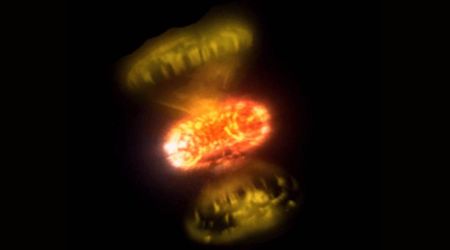NASA Earth Observatory captures breathtaking view of Boston's unique Drumlin Islands

The NASA Earth Observatory found some incredible aerial imagery of Boston Harbor and its incredible drumlin islands. These highlight rare geological formations, created long ago by glaciers more than 20,000 years ago. Boston Harbor is just one of three such natural locations on the planet, as reported on Newsweek. In July 2019, Operational Land Imager on Landsat 8 captured this image of the harbor and its Drumlin islands. The photograph showed an aerial view of the Harbour and 34 Islands and a peninsula that form the National and State Park, drawing attention to its historical and cultural importance.
Our third stop brings us to the Boston Harbor Islands National and State Park in Massachusetts. 🏖️
— NASA Landsat (@NASA_Landsat) April 25, 2025
The islands support a range of ecosystems, including salt marshes, sandy beaches, seagrass beds, tidal pools, mudflats, grasslands, and hardwood forests.https://t.co/9NUU75naj8 pic.twitter.com/5Z9vc41drq
Around 100,000–75,000 years ago, during the peak of the Wisconsin Glaciation that ended 11,000 years ago, a massive ice sheet — exceeding a mile in thickness in certain places — blanketed the land that now makes up Boston Harbor. As this ice melted and eventually retreated, it deposited piles of sediment and glacial debris in hundreds of elongated, streamlined hills called drumlins. Eventually, they turned into islands as the sea started rising. It created the only partially submerged drumlin field in North America and one of only three in the world. Several of these unique landforms and remnants of glaciers that sculpted the region over 20,000 years ago now make up the heart of the Boston Harbor Islands National and State Park, which preserves many distinctive geological, historical, and natural resources.

While studying the formation of islands, scientists gain insights into the role that glaciers have played in shaping many existing landforms. Back in 2016, Jasper Knight, a geoscientist at the University of Witwatersrand, South Africa, told NASA, "Previous ideas of slow, steady advance, or retreat, really don't hold. Glaciers are dynamic," as per Newsweek.

The islands have a rich tapestry of ecosystems, including salt marshes, sandy beaches, seagrass beds, tidal pools, mudflats, grasslands, and hardwood forests. Fish such as striped bass, bluefish, and flounder inhabit the waters, and crustaceans like lobsters, crabs, and clams do too. While dozens of mammal, bird, reptile, and amphibian species can be found on land, Mussels and barnacles live in the intertidal zones of these islands, according to NASA.

Deer Island, Nut Island, World’s End, and Webb Memorial are only four of the Boston Harbor drumlin islands that are accessible by car. Four others — Spectacle Island, Georges Island, Peddocks Island, and Thompson Island — are served by seasonal ferries, while many more remain accessible only by private boat. The park is governed by the Boston Harbor Islands Partnership, a federally legislated body made up of eleven agencies.

Beyond their natural significance, these islands are also home to some historical landmarks. Among these, Little Brewster Island hosts Boston Light, the oldest continually operated light station in the United States, dating back to 1716, and Fort Warren, a Civil War-era fortress on Georges Island. NASA also stated, Peddocks Island is one of the largest and has privately owned cottages on its western end, along with the remains of a coastal fort. On the other hand, Long Island was once connected to Boston via a highway bridge and contains aging government buildings, a performing arts center, a fire station, a chapel, a crematorium, and other structures.

